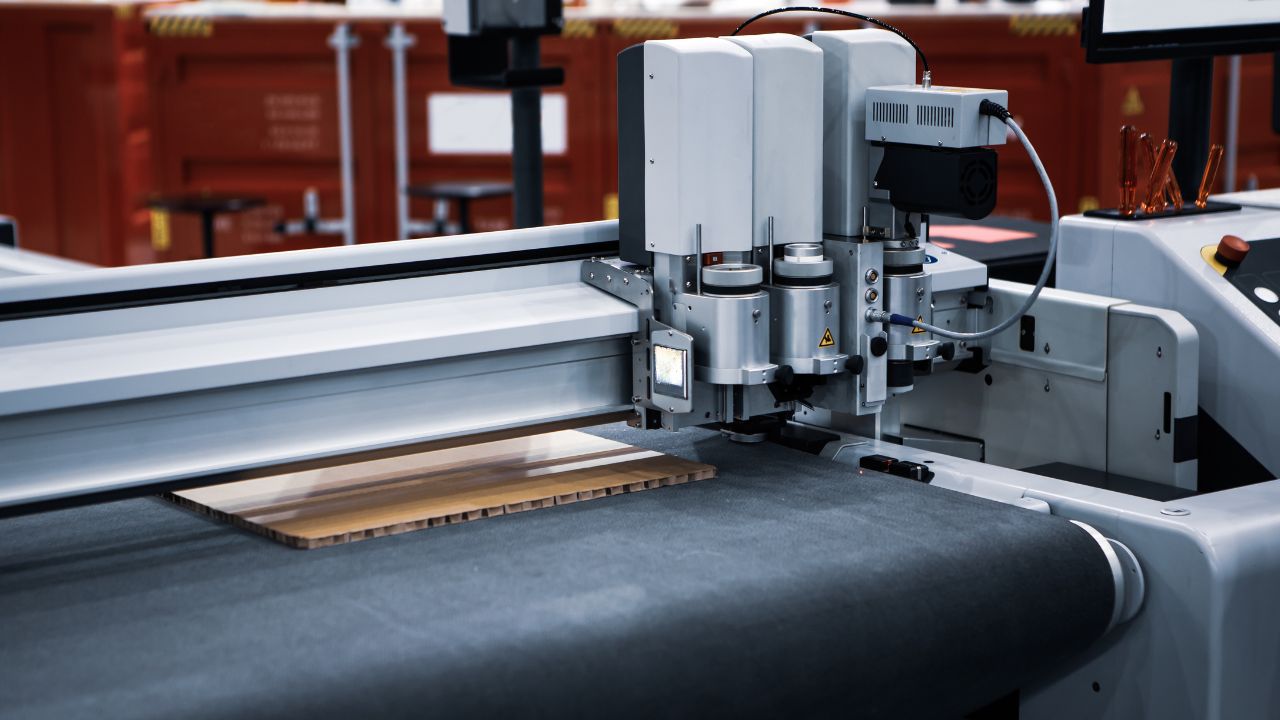In the dynamic world of manufacturing and design, precision and efficiency drive innovation, especially when working with materials like cardboard. A critical tool in this domain is the laser die cutter machine, which emulates not just precision but also the versatility required for cutting cardboard. These cutters vary in their operational mechanisms and applications, ranging widely in size, complexity, and function.
To understand how they cater to different production needs, let’s explore five types of cardboard laser die cutters: flatbed, roll-fed, conveyor, rotary, and handheld laser cutters.
Five Types Of Cardboard Laser Die Cutters Available In The Market
1. Flatbed Laser Cutter
A flatbed laser cutter is distinguished by its sturdiness and flexible capabilities. It boasts a broad, steady work area that ensures the cardboard remains fixed while being precisely cut by the laser. Essential for work that demands exact cuts and often deals with diverse material dimensions and thicknesses, the flatbed design handles both small bespoke jobs and extensive manufacturing tasks. Its utility spans many sectors, notably in creating bespoke packaging and eye-catching retail displays.
2. Roll-fed Laser Cutter
Efficiency in continuous production is best achieved with roll-fed laser cutters. This type involves feeding cardboard from a roll into the cutting mechanism, which consistently processes the material without requiring manual intervention. Its continuous operation is ideal for long production runs and is highly valued in industries where time and consistent quality are critical, such as in mass-produced packaging or large quantities of custom shapes.
3. Conveyor Laser Cutter
Where high-volume output is the goal, the conveyor laser cutter steps in as a capable ally. This cutter incorporates a conveyor belt that seamlessly feeds sheets of cardboard through the cutting area, making it similar to the roll-fed type but typically broader in application. It’s particularly suited to environments where speed and volume are necessary without sacrificing the cleanliness of cut edges, which is common in large factories dealing with extensive orders of uniform cardboard products.
4. Rotary Laser Cutter
Uniquely specialized, the rotary laser cutter is designed for projects requiring precise cuts on cylindrical or curved surfaces. It utilizes a rotary attachment that spins the cardboard during the cutting process, which allows for meticulous and consistent designs on complex shapes. This type of cutter is indispensable in creating custom cylindrical packaging, decorative items, and in architectural modeling where precision on rounded elements is necessary.
5. Handheld Laser Cutter
The handheld laser cutter offers portability and ease of use, making it perfect for on-site jobs, small workshops, or hobbyist settings. Lightweight and versatile, this cutter allows for intricate cutting and creativity in places where larger, stationary machines cannot operate. It’s particularly useful for custom work in installations, art projects, or repair operations where precision cuts need to be made directly on existing structures.
Opting For The Right Type Of Laser Die Cutter
Each of these laser die cutters has distinct advantages that make them suitable for specific tasks within the vast field of cardboard manipulation. From large-scale industrial production to artistic and precise custom designs, these tools provide solutions that can dramatically increase productivity, creativity, and efficiency across various industries.
By choosing an appropriate cardboard laser die cutter, businesses can ensure not only the quality and precision of their products but also optimize their operational workflows. Adopting the right type of laser die cutter depends primarily on various factors discussed below:
- Consider Production Scale: For high-volume, consistent cutting, a conveyor or roll-fed laser die cutter is ideal; for varied or smaller projects, a flatbed model offers versatility.
- Determine Design Detail Needs: Choose a flatbed laser die cutter for complex, intricate designs, or opt for a rotary model when working with cardboard requiring curved or cylindrical cuts.
- Evaluate Space and Mobility: Large operations benefit from stationary units like conveyor systems, while handheld laser cutters offer flexibility for tight spaces or mobile needs.
- Assess Material Compatibility: Ensure the laser die cutter is well-suited not only to cardboard but also to any other materials you plan to work with.
- Budget Wisely: Consider both upfront costs and long-term ownership expenses, including maintenance and operational efficiency.
- Seek Reliable Support: Choose manufacturers that provide robust after-sales service, warranty, and training to ensure maximum uptime.
- Demo for Assurance: Request live demonstrations or samples to confirm the cutter’s performance with your specific materials and design requirements.
By analyzing these concise factors, you can select a cardboard laser die cutter that aligns perfectly with your operational objectives and creative demands.
Wrapping up
In conclusion, whether one opts for a machine capable of handling heavy volumes like the conveyor or roll-fed cutters, needs the precision of a flatbed or rotary cutter, or requires the flexibility of a handheld device, there exists a laser cutter to meet all these varied needs, reaffirming the versatility and indispensability of these tools in modern manufacture and design.


